70 F. Twin Cities high temperature Monday.
67 F. average high on May 8.
73 F. high on May 8, 2016.
May 9, 1966: Minnesota experiences a widespread hard freeze, with temperatures in the teens as far south as Caledonia.
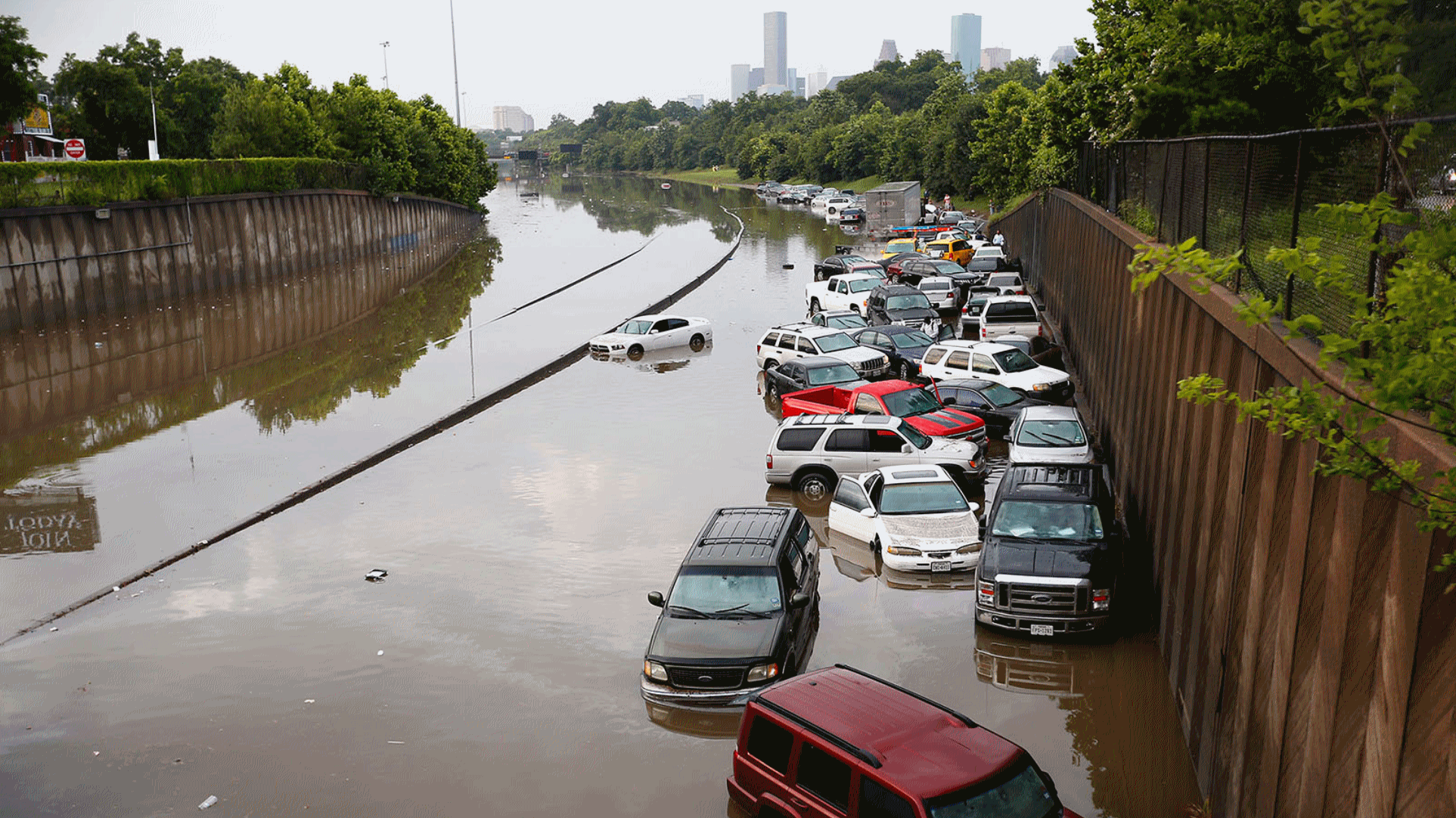 Good Reasons to Consider Flood Insurance
Good Reasons to Consider Flood InsuranceI
might consider spending a few extra bucks on flood insurance, even if
you think you're not in a flood zone. Remember, homeowners insurance
doesn't usually cover flood-related damage.
Last year, for the
first time on record, Minnesota experienced 2 separate "mega-rain" flash
flood events. That means over 1,000 square miles picking up 6 inches or
more. 2016 brought 160 natural disasters across North America with 19
major floods in the USA; the most since records were first kept in 1980,
according to Munich Re.
Epic floods are underway right now from
Arkansas and Missouri to Montreal. You don't have to live near a river
to be at risk. "Drainage events" are floods that lie outside traditional
FEMA flood zones. A 2015 Illinois study showed that almost all flood
damage occurred outside the traditional flood plain.
Heaviest
rains slide south of Minnesota this week, brushing southern counties
with showers tonight and Wednesday. A few T-storms may bubble up over
the weekend as a warm front approaches.
ECMWF guidance hints at a few 70s next week with more noticeable humidity levels.
File photo: Houston flooding in 2015, courtesy of AP.
Unpleasant Surprises.
With increasing frequency people are discovering that they may be
vulnerable to "drainage events", serious flooding - with no stream or
river nearby to overflow. FEMA flood maps don't necessarily factor these
new drainage floods into account. Cutting to the chase: drainage and
sewage systems designed in the 20th century can't handle 21st century
rainfall events.
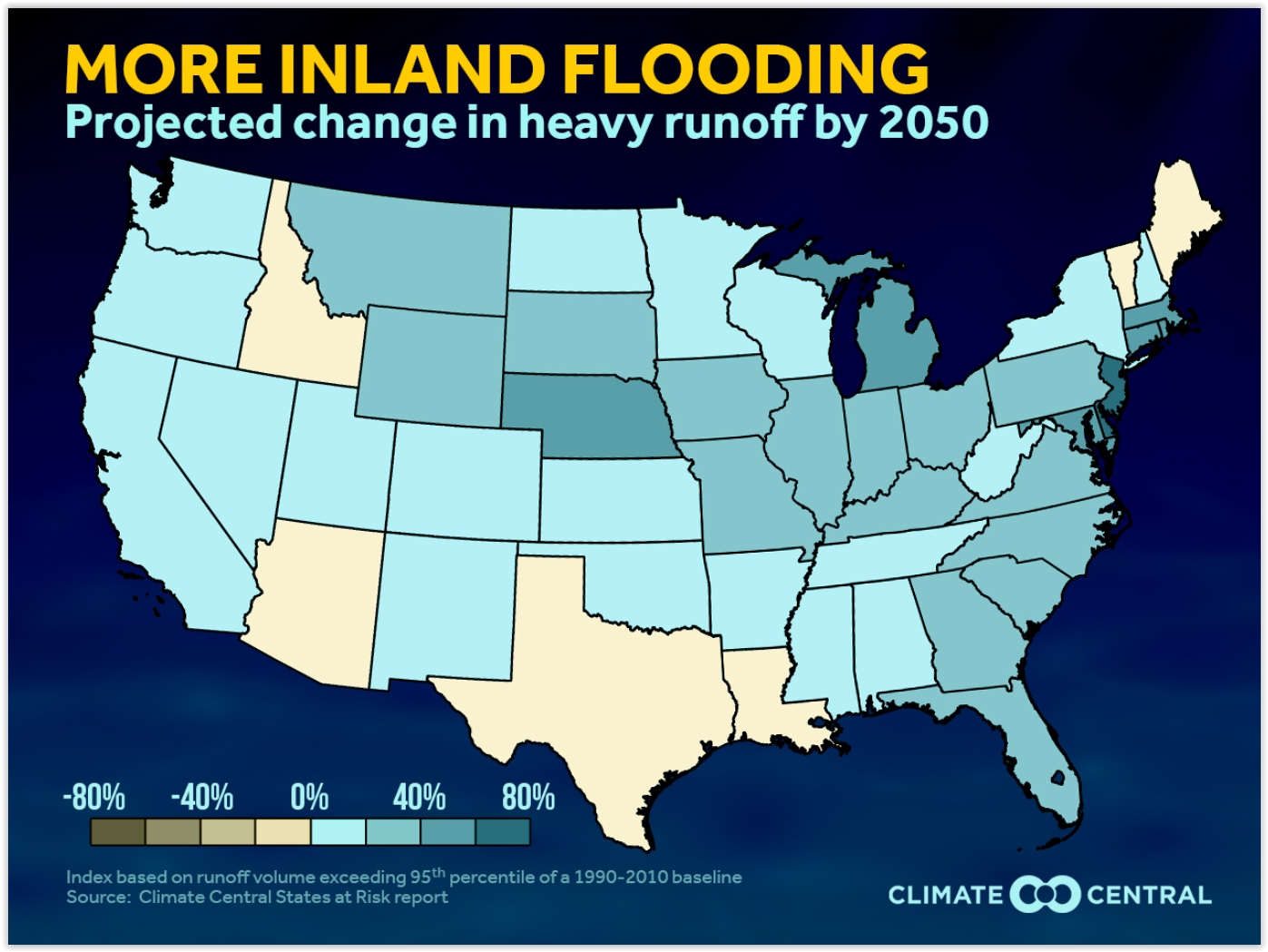
Proliferation of Puddles Front Range to Mid Atlantic.
At a glance it's easy to see where storms will be tracking for at least
the next week, from the Pacific Northwest across the central Plains and
Midwest into the Virginias and New Jersey, where 1-3" rainfall amounts
are possible.
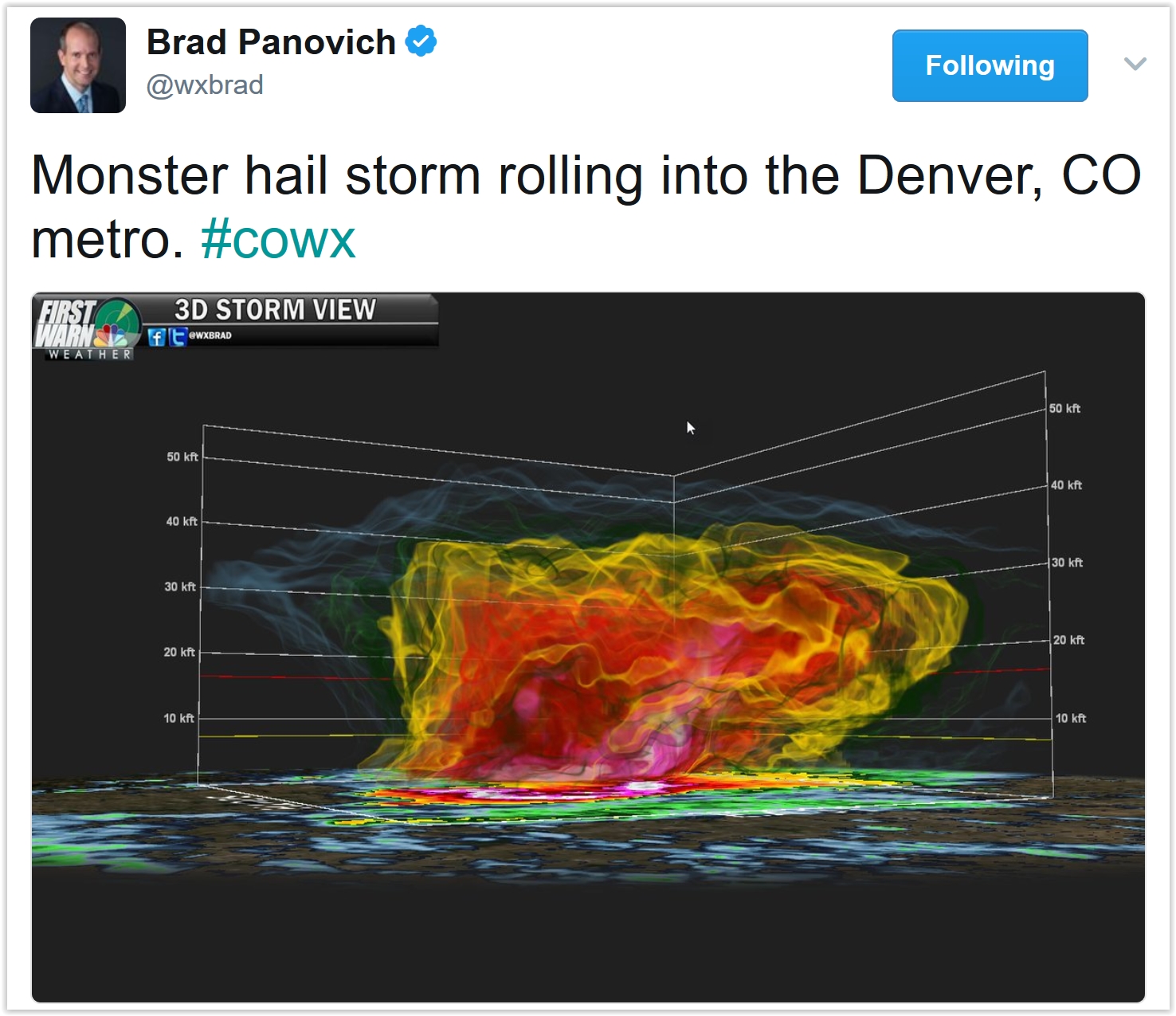 3-D Hail Core
3-D Hail Core.
Meteorologist Brad Panovich took a 3-D slice of the severe hailstorm
that shut down Denver for a time yesterday. A relatively low freezing
level meant more of those (giant) 3-4" diameter hailstones were able to
survive the trip to the ground, creating a winter-like scene for much of
the area.
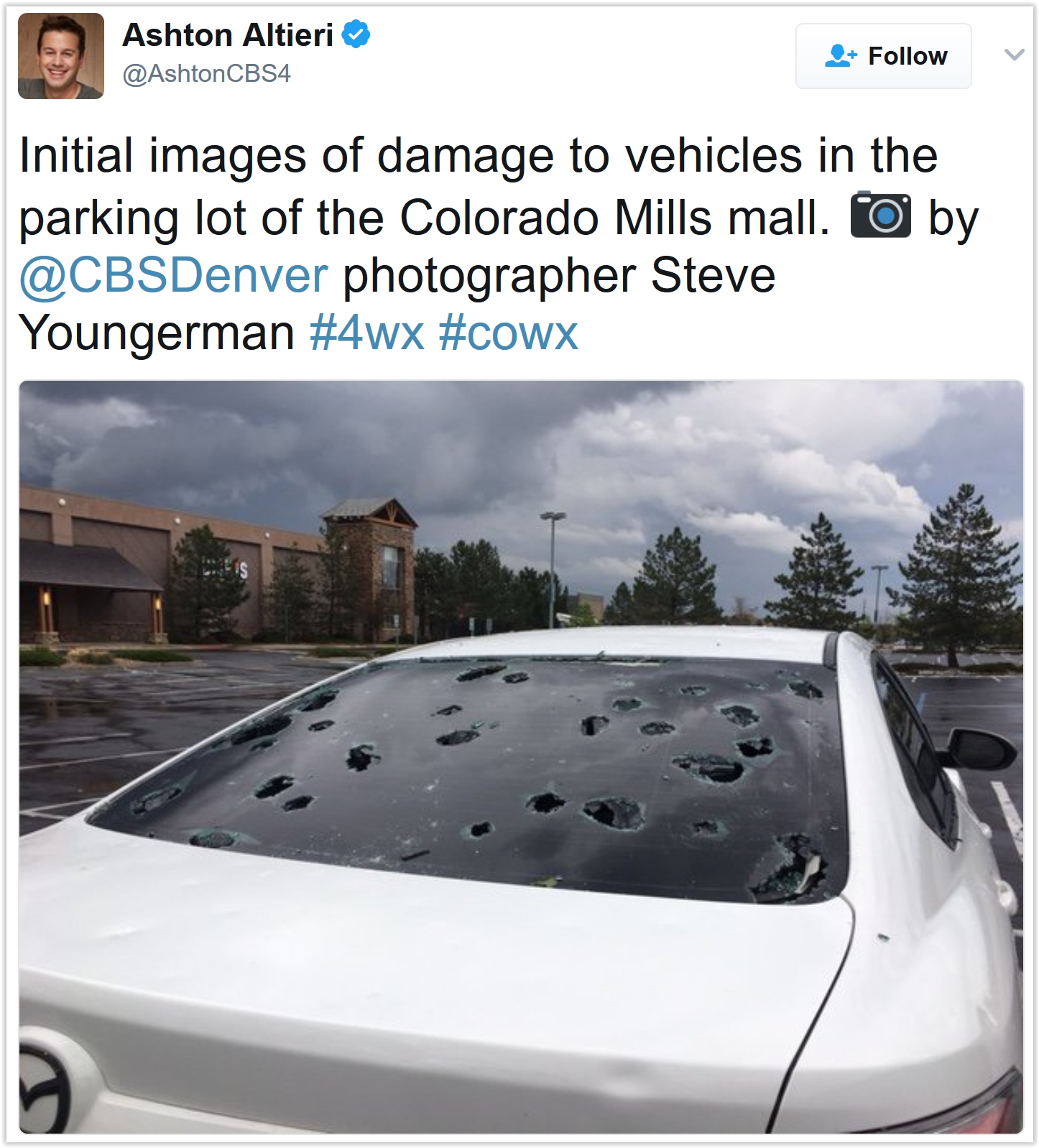 Evidence of Baseball Size Hail
Evidence of Baseball Size Hail.
When hail goes through car windshields there's a good chance it's
baseball-size or larger (3-4" in diameter) - hitting the ground at
speeds over 100 mph. Amazing.
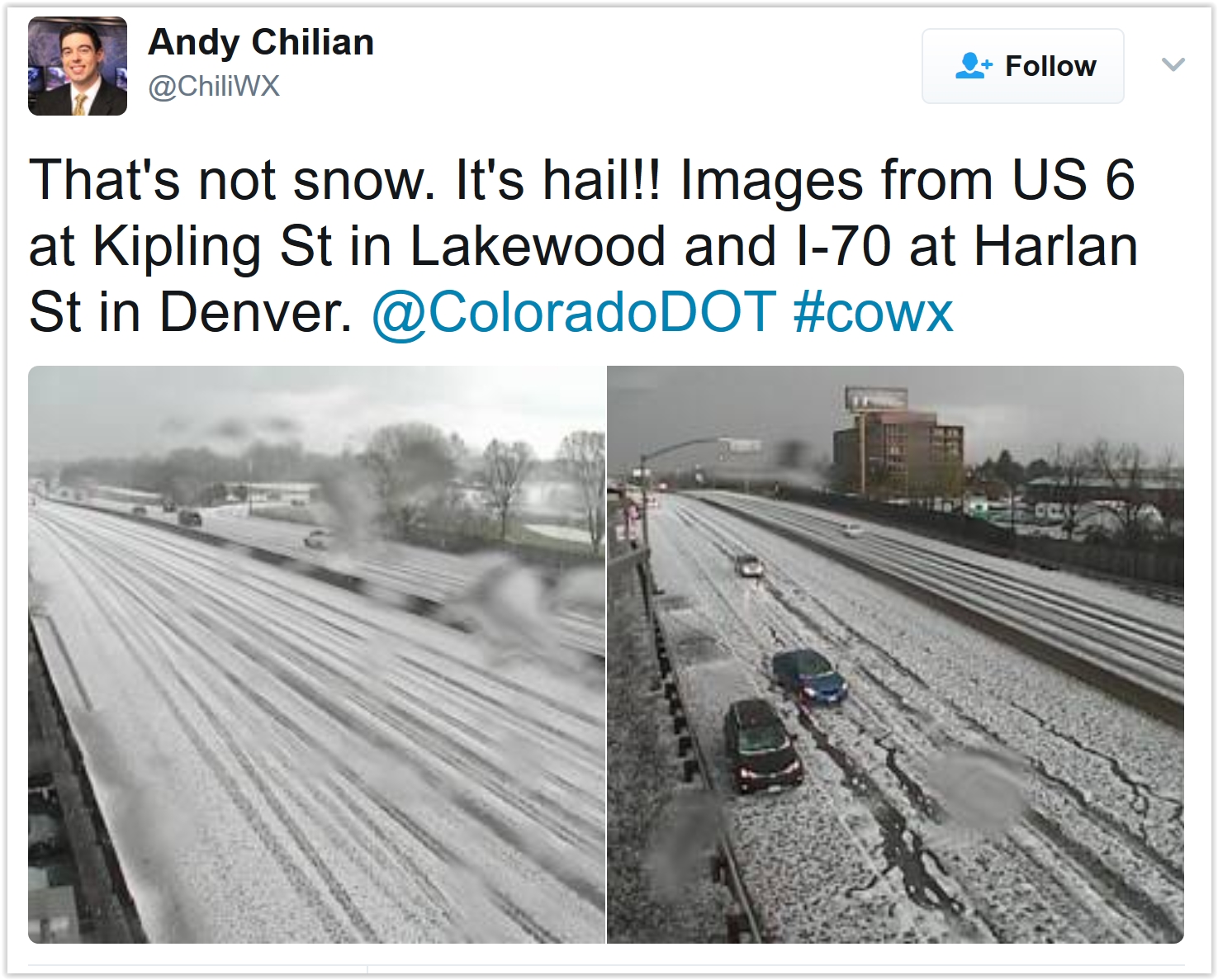 January in May
January in May.
The hail fell so long and hard in Denver and Colorado's Front Range
yesterday that it accumulated on lawns, fields and roads. You may want
to leave those all-season tires on a bit longer.
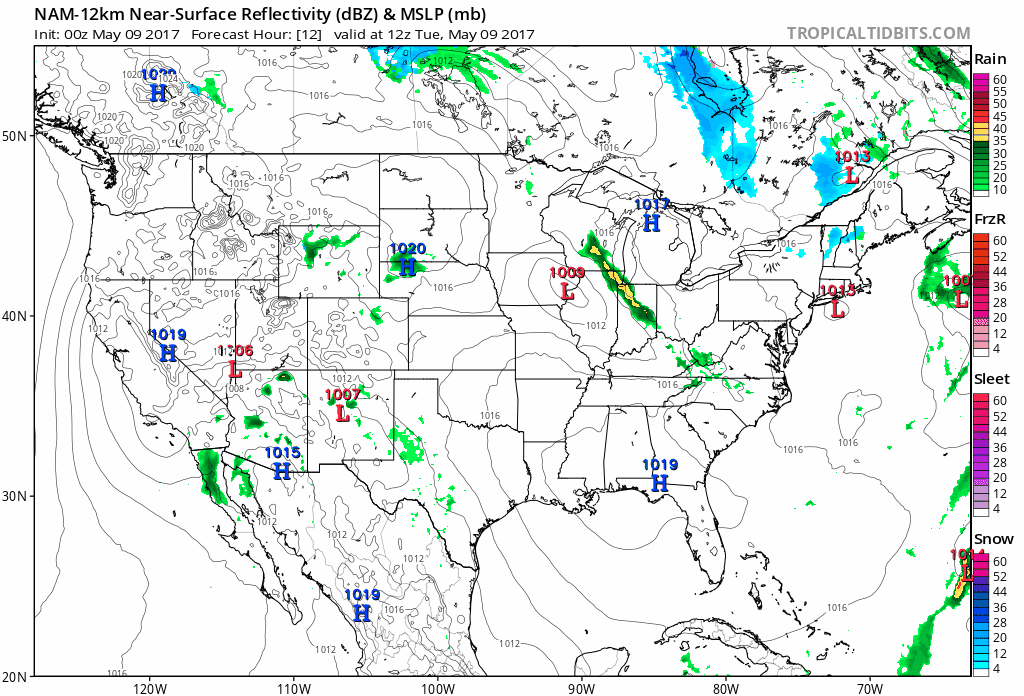 Surges of Warmth
Surges of Warmth.
A higher sun angle is trying to send warmer, wetter air northward, but
chilly air is slow to leave the northern USA this spring, resulting in
waves of stormy ripples along the boundary separating sticky from
chilly. The west coast dries out a bit; showers of rain (and snow)
winding down for New England, but the next wave of heavy showers and
T-storms pushes across the Plains into the Upper Midwest by Wednesday.
84-hour 12 KM NAM guidance: NOAA and Tropicaltidbits.com.
Frost-Free.
I believe it's safe to plant annuals now, at least within 30-40 miles
of the downtowns. We cool off a bit later this week but the frost-freeze
season is probably over now. Famous last words. Highs reach the 60s
into next weekend, maybe a few 70s next week. Twin Cities ECMWF
guidance: WeatherBell.
Shifting Gears Into a More Summerlike Pattern.
Sizzling heat is in no great hurry this year, but I suspect we'll make
up for lost time within a month or two. The GFS forecast for 500 mb 2
weeks out shows a warming trend, but a lingering tendency for storms
impacting the Pacific Northwest and Great Lakes.
 First 4 Months of 2017: Warmest on Record for 14 States
First 4 Months of 2017: Warmest on Record for 14 States.
The warm bias continues, with a record start to 2017 reported from New
Mexico and Texas to Florida and Ohio. Only one state (Washington) had a
cooler than average start to the year. Map:
NOAA NCDC.

West Mims Fire.
This is a massive blaze near the Georgia/Florida border, and the smoke
plume was easy to spot on (non-operational) GOES-16 imagery yesterday.
More details at
InciWeb.
Severe Weather, Tornadoes Plague Missouri to Start 2017. Here's a clip from
Missourian that puts spring weather-misery into context: "
Missouri has been among the states hit hardest by severe weather so far in 2017, according to preliminary data from the National Weather Service’s Storm Prediction Center.
As prime time for tornadoes begins, the data suggests the worst is yet
to come. Through May 4, Missouri recorded 555 reports of severe weather,
made up of hail, thunderstorms, winds and tornadoes. That’s the
second-highest rank in the U.S., with only Texas reporting more. This is
part of an above-average start to the year for severe weather across
the U.S., with 6,947 incidents of severe weather reported through the
first four months of the year. Comparing preliminary data, which is
subject to revision and can increase or decrease slightly, that ranked
as the fourth most active start to a year since 2000..."
Photo credit: Charlie Riedel/AP. "
Ethan
Pederson, 9, and his mom Susan Goodman clear away debris as they help
salvage items from a friend's home on March 7 that was destroyed by a
tornado after a severe storm passed through Oak Grove, Missouri."
U.S. Secretary of Agriculture Sees Flood Damage, Estimates 940,000 Acres Destroyed. Here's an excerpt from
arkansasmatters.com: "
U.S.
Secretary of Agriculture Sonny Perdue in Arkansas Sunday on a tour of
the major flooding in the northeast. Secretary Perdue, along with
Governor Asa Hutchinson, and members of the Arkansas Congressional
Delegation took in the devastation from the air. Seeing several farms
under water from the floods last week. Farmers like Scott Brady said
it's going to be a rough year. "As of today, we've got about 4200 acres
of rice planted, and I'm estimating 3500 is under water," said Brady.
Randy Veach, President of the Arkansas Farm Bureau said this is a
disaster..."
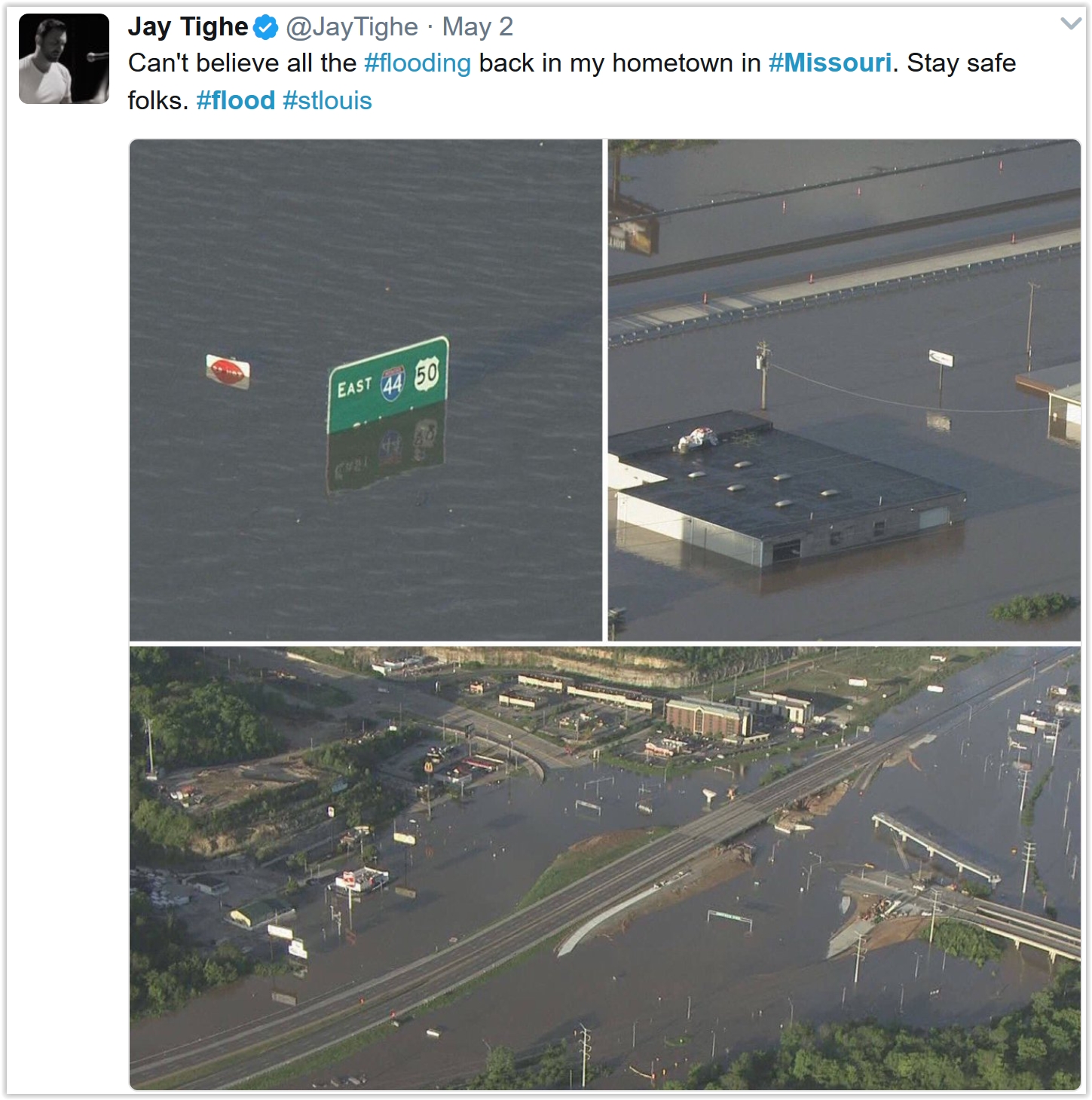 Mississippi River Mayors Seek Flood Mitigation Solutions.
Mississippi River Mayors Seek Flood Mitigation Solutions. A story at
KMOX Radio in St. Louis had statistics that made me do a double-take: "...
Wellenkamp
said since 2011 there’s been $50 billion worth of natural disaster
impact along the Mississippi, “Within that 50-billion you’ve got a
100-year flood, a 200-year flood, a 500-year flood, a 50-year drought,
and two hurricanes.” Wellenkamp said his Mississippi River Cities &
Towns Initiative continues to work with the federal government to find
ways of minimizing flood impact. He said the American taxpayer gets five
dollars back for every dollar spent on disaster mitigation for flooding..."
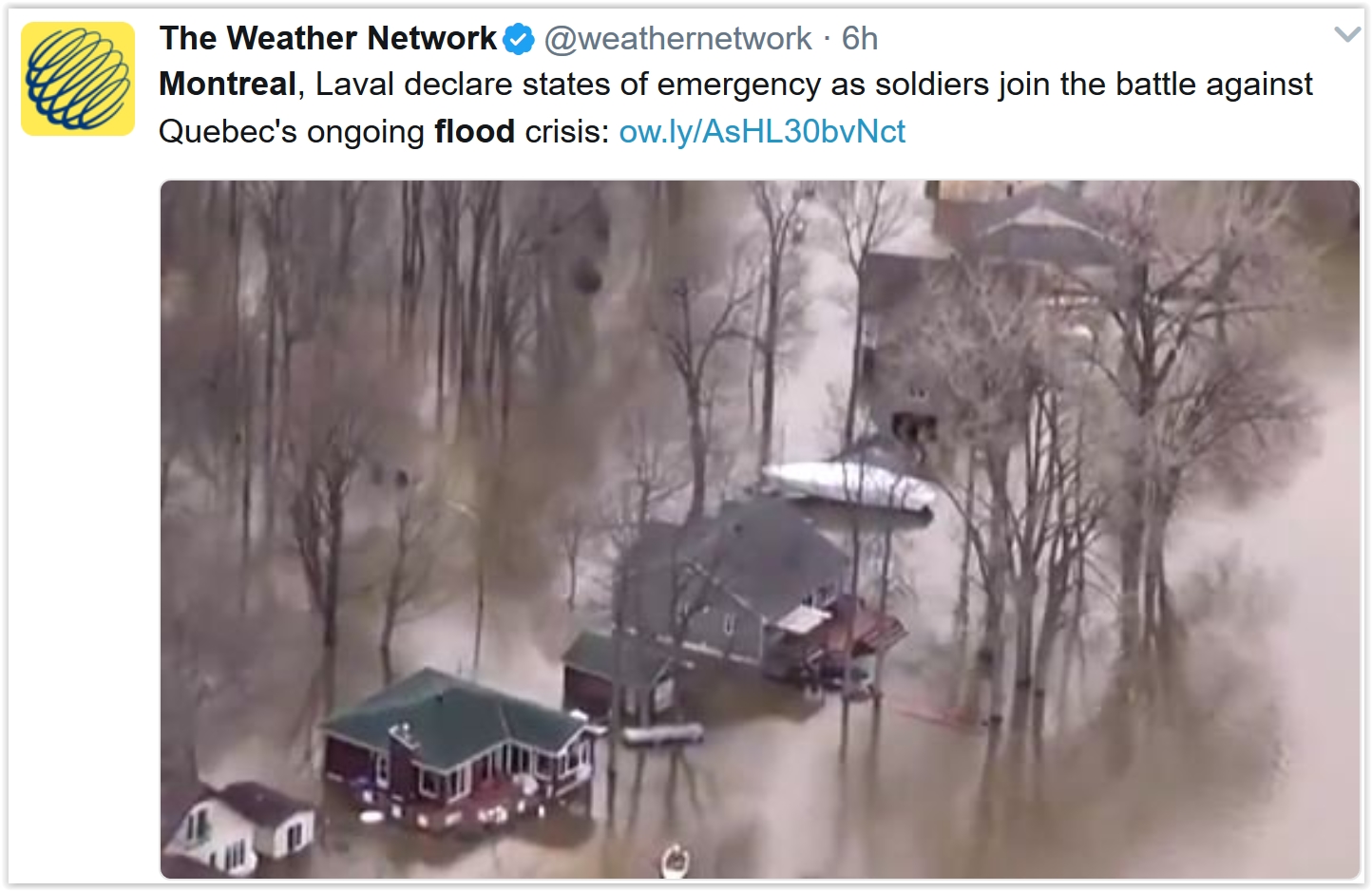 Montreal Declares State of Emergency Due to Flooding
Montreal Declares State of Emergency Due to Flooding.
Bad things happen when weather stalls. The same cut-off low that has
swamped much of New England is hammering eastern Canada as well. Here's
an excerpt from
CityNews: "
Thousands
of Canadians across the country are spending the weekend in a desperate
struggle with rising floodwaters caused by unusually persistent
rainfall. On Sunday, Montreal became the latest city in Quebec to
declare a state of emergency after three dikes gave way in the
Pierrefonds-Roxboro borough, in the north end of the city by the
Rivieres des Prairies. Montreal Mayor Denis Coderre said homes have been
evacuated in that borough as well as on two nearby islands. He said
officials were prepared to remove people from their homes if they
refused to evacuate. “I understand that morally or psychologically,
physically, mentally, people are very, very tired. We’re talking 24
hours in a row of people helping each other,” Coderre told reporters.
“But sometimes we need to protect people from themselves...”
Photo credit: "
Members
of the Canadian army walk along a flooded street in the Montreal
borough of Pierrefonds, Sunday, May 7, 2017, following flooding in the
region." THE CANADIAN PRESS/Graham Hughes.
The Billionaire and the Flood: How a Tragedy Transformed the Greenbriar Resort and Blue-Collar Town That Depended On It. Washingtonian Magazine has a story about the 3rd worst flood in West Virginia history and the political implications: "...In
the final days before the election, Justice’s team leveraged the flood
explicitly, releasing an ad that portrayed him as a savior amid the
wreckage. It showed fire swallowing a house in White Sulphur—an orange
apparition—and dragging it toward a bridge. The scene cuts to an
overturned 18-wheeler, then to a dystopic image of houses ripped from
their foundations. After a tribute to Justice’s help, flood victim Toni
Cooley appears. “Thank you, Mr. Justice, for everything you’ve done,”
she says. “I’m gonna get my house back.” Justice is now the 36th
governor of West Virginia. He won the state with nearly half the vote.
In Greenbrier County, which in the previous gubernatorial race just
barely went blue, he won more than 60 percent. “I didn’t think I’d vote
for him,” one White Sulphur city official says, “but after seeing the
way he helped us get going again, you couldn’t vote for anyone else. We
saw his heart...”
Photo credit: "
The flood on June 23, 2016, was the third worst in West Virginia history." Photo courtesy of the Greenbrier.
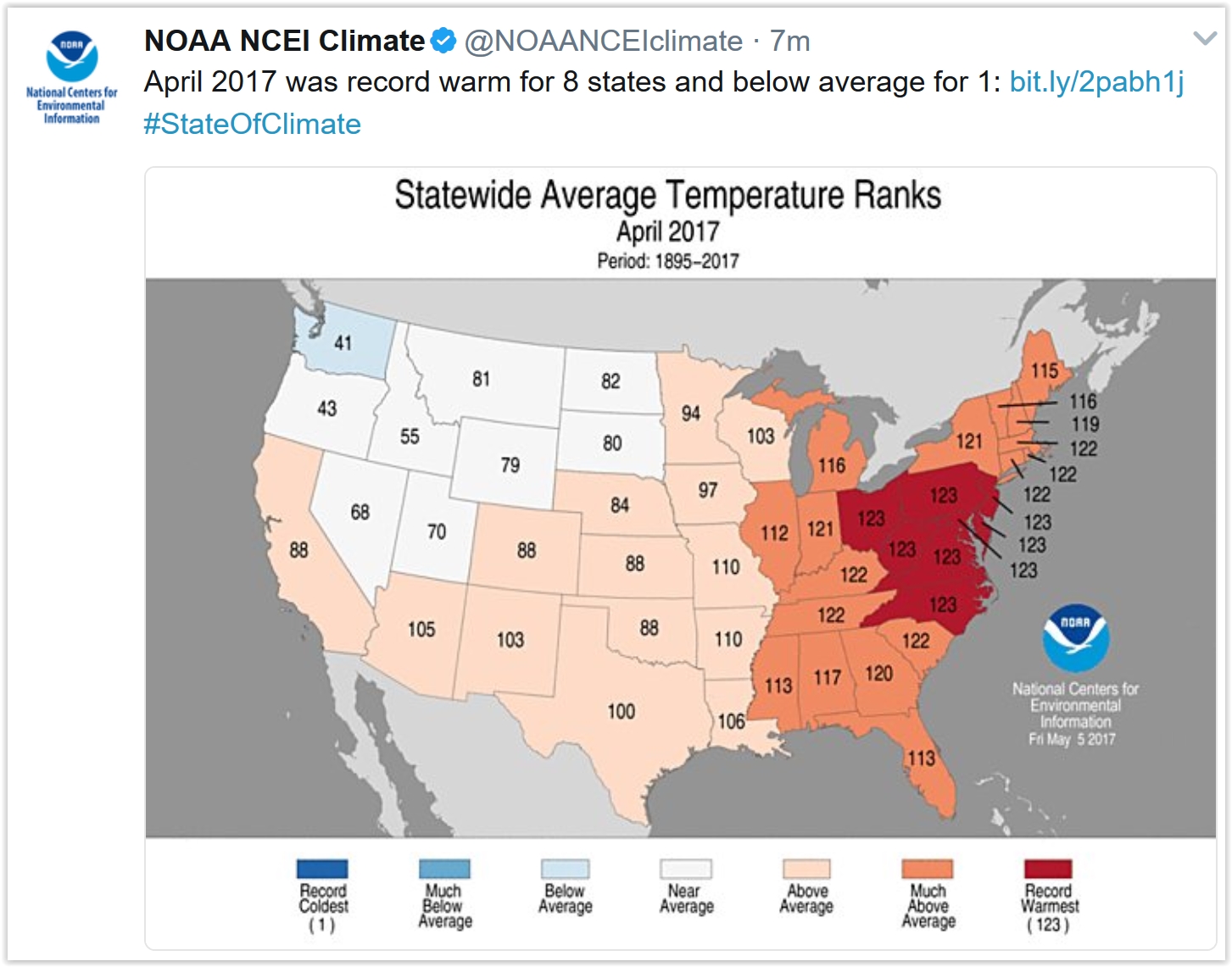
 Why Tornado Destruction Will Get Only Worse, Regardless of Climate Change
Why Tornado Destruction Will Get Only Worse, Regardless of Climate Change.
Because cities continue to expand into suburbs and exurbs - what were
fields and forests 50 years ago are now strip malls and housing
developments. Here's an excerpt from a story at
Philly.com: "...
Since
1950, says Stephen Strader, an assistant professor in Villanova
University’s department of geography and the environment, development in
the contiguous 48 states, home to one of the world’s most-fertile
tornado spawning grounds, also has more than quadrupled. By his
estimate, only 5 percent of the land mass was considered developed in
1950; by 2010, that number was 22 percent, and a lot of building
occurred in some of the world’s most fertile spawning grounds for
tornadoes. In papers
published recently he has warned that tornado damages could triple by
the end of the century, even if tornadoes don’t get an extra kick from a
warming trend. Things would be worse, of course, if they do. “We build
ourselves into disasters,” he says. “Disasters are socially constructed...”
Photo credit:
Sarah A. Miller, Tyler Morning Telegraph via AP. "Kyle
Allen walks his parents' property in Canton, Texas, on April 30,
looking for personal items after tornadoes hit the area the previous
night. Severe storms including tornadoes swept through several small
towns in East Texas, killing several people."
 Don Paul: A Tenuous Tie Between Tornadoes and Climate Change.
Buoyancy is increasing with warming, but wind shear may actually
decrease over time. The jury is still out, explains meteorologist Don
Paul at The Buffalo News: "...Brooks’
and others' research shows the suspected link is tenuous to some
extent. Some of the uncertainty in research is tied to the small scale
of tornadoes and the difficulty in simulating their development in
larger scale computer models. There is a higher certainty of the link
between a warming climate and more numerous intense thunderstorms with
torrential downpours. The extra heating adds more buoyancy to moist low
level air by taking advantage of the potential energy already present in
that air. A warming climate is linked with more episodes of rapid
upward motion of moist parcels of air, lifted to where it cools and must
condense. With enough strong lift comes violent, heavy thunderstorms.
Since tornadoes come from thunderstorms, and usually violent storms, it
must follow the increase in those storms would have an almost linear
relationship with an increase in tornadoes. The complexity and
uncertainty enters the picture when models show a warming climate will
probably lessen the favorable change in winds with increased altitude
which feeds the spin in the atmosphere leading to tornadoes
Don Paul: A Tenuous Tie Between Tornadoes and Climate Change.
Buoyancy is increasing with warming, but wind shear may actually
decrease over time. The jury is still out, explains meteorologist Don
Paul at The Buffalo News: "...Brooks’
and others' research shows the suspected link is tenuous to some
extent. Some of the uncertainty in research is tied to the small scale
of tornadoes and the difficulty in simulating their development in
larger scale computer models. There is a higher certainty of the link
between a warming climate and more numerous intense thunderstorms with
torrential downpours. The extra heating adds more buoyancy to moist low
level air by taking advantage of the potential energy already present in
that air. A warming climate is linked with more episodes of rapid
upward motion of moist parcels of air, lifted to where it cools and must
condense. With enough strong lift comes violent, heavy thunderstorms.
Since tornadoes come from thunderstorms, and usually violent storms, it
must follow the increase in those storms would have an almost linear
relationship with an increase in tornadoes. The complexity and
uncertainty enters the picture when models show a warming climate will
probably lessen the favorable change in winds with increased altitude
which feeds the spin in the atmosphere leading to tornadoes..."
Photo credit: "
People clean up the debris inside homes destroyed by a tornado in Van Zandt County, Texas, on April 30, 2017." (Jae S. Lee/Dallas Morning News/TNS)
Radar Simulator Helps Characterize Scattering of Debris in Tornado. Here's an excerpt of an article at
Homeland Security News Wire explaining how the tracking of debris within a tornado can help to advance the science: “
The
knowledge gained from this study will improve tornado detection and
near real-time damage estimates.” Characterizing debris fields in
tornadoes is vital, scientists say, because flying debris causes most
tornado fatalities. The researchers conducted controlled measurements of
tornado debris to determine the scattering characteristics of several
debris types, such as leaves, shingles and boards. The orientation of
the debris, the scientists found, makes a difference in how it scatters
and falls through the atmosphere — and where it lands..."
Image credit: "
Researchers
at the University of Oklahoma are learning more about how that debris
affects a tornado through radar simulation. This program shows the
different types of debris inside a tornado. And a room allows them to
simulate a tornado with debris." Courtesy: KFOR / NBC News Channel
Tornado Warning Time Could Be Improved by Drones. Is this the next big breakthrough in tornado detection/confirmation/tracking? Here's an excerpt from
KOTV.com in Tulsa, Oklahoma: "...
Thirteen
minutes. That is the average time between the detection of a tornado
forming to when it touches down, leaving people in its path scrambling
to find a safe place. This countdown was a reality for parts of the
Midwest and south earlier last week as severe storms and tornados
battered the areas leaving at least 14 people dead. Unlike other
weather systems, tornados form quickly, are hard to predict and even
harder to track. Jamey Jacob and his team from Oklahoma State University
are working on a set of drones designed to fly into and analyze severe
weather systems. "Meteorologists are very good at predicting when and
where the storm is going to develop but not so good at determining when a
storm is going to form a tornado at a particular place or at a
particular time," Jacob said..."
90% of Hurricane Deaths Aren't From the Wind.
THE WEATHER SOCIAL reminds us of the sheer power of storm surge: "...
You should
prepare for a reasonable worst case scenario because, albeit
infrequent, storm surge is an extreme event. Water moving at only 4 mph
has the same damage potential as the winds of a Category 3 hurricane.
90% of hurricane related deaths are from water. Storm surge is the
deadliest hazard of a hurricane. I can go on but needless to say a few
feet of ocean water in your neighborhood is a big, life-threatening
deal. Which brings us to the second new storm surge product from the
National Hurricane Center — the storm surge watch/warning graphic..."
Map credit: "Example
of the new Storm Surge Watch/Warning graphic from the National
Hurricane Center for south Louisiana, Mississippi, and Alabama. The
product is experimental for this hurricane season but is expected to
become an operational watch/warning product from the National Weather
Service by the 2017 hurricane season."
Minnesota Sees 80 Percent Jump in Solar Energy Capacity This Year. Here's an excerpt from
Star Tribune: "
Minnesota's
solar energy capacity rose 80 percent during 2017's first three months,
the second consecutive quarter of leapfrog growth as several major
solar arrays were switched on. The state had 447 megawatts of solar
production capacity at the end of the first quarter, a far cry from 37
megawatts at the end of 2015, according to data released Friday by the
Minnesota Department of Commerce. A megawatt is 1 million watts, enough
electricity to power 140 homes. Altogether, Minnesota's solar arrays
have the capacity to crank out about as much power as one of Xcel
Energy's larger natural gas-fired plants — at least when it's sunny..."
Photo credit: Wright Hennepin Cooperative Electric Association. "
Solar
capacity has jumped 80 percent in Minnesota this year, provided by
projects such as the Wright Hennepin Cooperative Electric Association's
in Rockford, the first community array in the state."
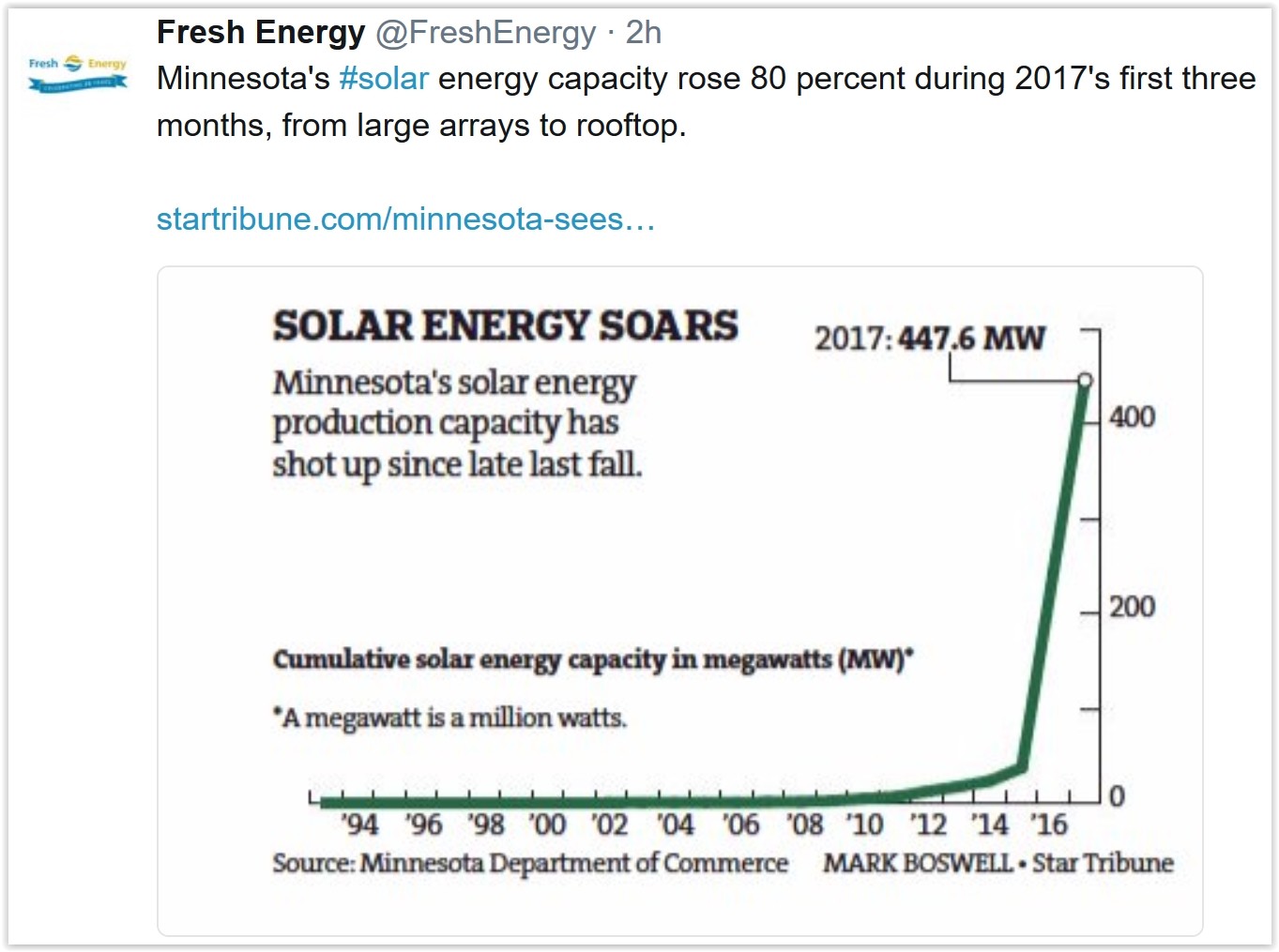
60-Foot, All-Electric Bus With 275 Miles of Range? Insideevs.com has the story: "
The
Antelope Valley Transit Authority (AVTA) has become the first transit
provider in North America to have an all-electric, 60-foot articulated
electric bus in its fleet, supplied by BYD. It’s the production version
of the prototype shown some two years ago,
with a ~547 kWh battery and has an expected real world range of 275
miles according to a company spokesperson. This particular vehicle is
the first of thirteen 60-foot BYD buses ordered, together with a shorter
version, in AVTA’s broader goal to switch its entire fleet to BEVs by 2018.
Another big achievement is the delivery of BYD’s 250 kW WAVE wireless
charging system that should be capable of recharging the bus in around
two hours..."
Photo credit: "
Antelope Valley Transit Authority received North America’s first 60-foot articulated electric bus made by BYD."
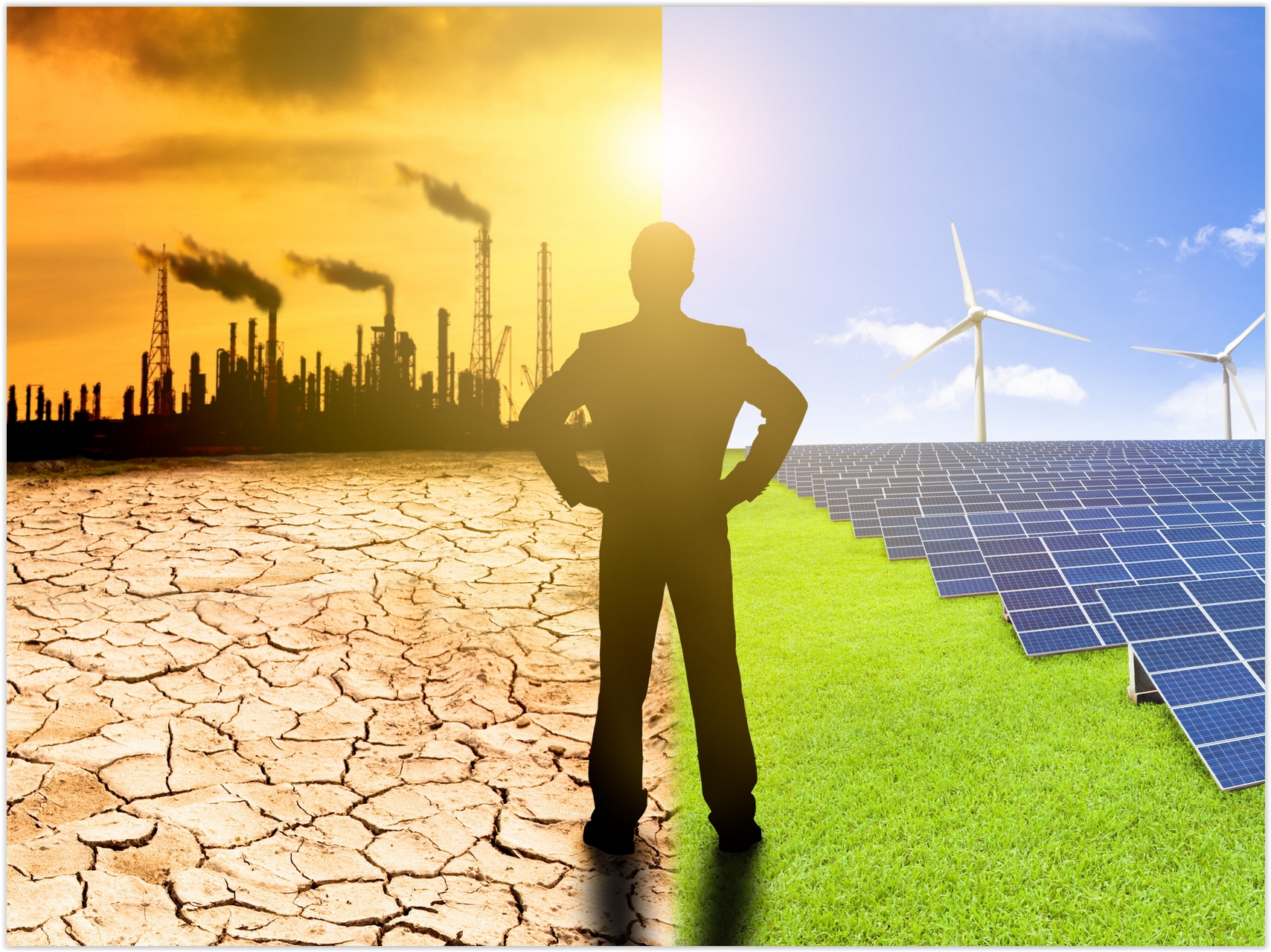 As Environmental Battles Shift to States, Renewable Energy Adoption Could Come Down To Economics
As Environmental Battles Shift to States, Renewable Energy Adoption Could Come Down To Economics. Here's an excerpt from
TechCrunch: "...
Many
of these are built in as best practices almost independent of
regulatory requirements,” said Muro. “Much of the cleantech,
advanced-economy-focused companies already embraced these practices as
relentlessly trying to drive carbon and pollution out of their supply
chains. They see it as a broader consumer appeal and are moving ahead
irregardless of the immediate regulatory scrimmaging at the moment.”
Wall street banks and big insurance companies are also pushing policies
that encourage businesses to take their climate responses into account.
The insurance industry is beginning to see losses rise from climate related events, and they’d like to encourage customers to do more to address those impacts. Meanwhile investment funds are beginning to drop fossil fuel stocks.
A December report in the New York Times indicated that many big
investors smell trouble in their traditional energy portfolios for a
number of reasons..." (Image credit: TechCrunch).
Bosses Believe Your Work Skills Will Soon Be Useless. Prepare for a career of lifelong learning and retraining - that won't be optional. Here's a clip from The Washington Post: "Nearly
a third of business leaders and technology analysts express “no
confidence” that education and job training in the United States will
evolve rapidly enough to match the next decade’s labor market demands, a new report from
the Pew Research Center finds. About 30 percent of the executives,
hiring managers, college professors and automation researchers who
responded to the Pew survey felt future prospects looked bleak,
anticipating that firms would encounter more trouble finding workers
with their desired skill sets over the next decade. “Barring a
neuroscience advance that enables us to embed knowledge and skills
directly into brain tissue and muscle formation, there will be no
quantum leap in our ability to ‘up-skill’ people,” wrote Andrew Walls,
managing vice president at Gartner, an IT consulting firm..."
Linear Thinking in a Nonlinear World.
Harvard Business Review explains why we all need to think different (thank you Steve Jobs). Here's an excerpt: "...
If
you’re still having trouble grasping this, it’s not your fault. Decades
of research in cognitive psychology show that the human mind struggles
to understand nonlinear relationships. Our brain wants to make simple
straight lines. In many situations, that kind of thinking serves us
well: If you can store 50 books on a shelf, you can store 100 books if
you add another shelf, and 150 books if you add yet another. Similarly,
if the price of coffee is $2, you can buy five coffees with $10, 10
coffees with $20, and 15 coffees with $30. But in business there are
many highly nonlinear relationships, and we need to recognize when
they’re in play. This is true for generalists and specialists alike,
because even experts who are aware of nonlinearity in their fields can
fail to take it into account and default instead to relying on their
gut. But when people do that, they often end up making poor decisions..."
U.S. Life Expectancy Varies By More Than 20 Years from County to County. For much of America it's going in the wrong direction, according to new data compiled at
The Washington Post: "
Life
expectancy is rising overall in the United States, but in some areas,
death rates are going conspicuously in the other direction. These
geographical disparities are widening, according to a report published Monday in JAMA Internal Medicine.
Life expectancy is greatest in the high country of central Colorado,
but in many pockets of the United States, life expectancy is more than
20 years lower, according to the report from the University of
Washington’s Institute for Health Metrics and Evaluation..."
The Long, Hard, Unprecedented Fall of Sears. The original retail disruptor has been disrupted. Bloomberg tells the tale: "
In
1989, Sears Roebuck & Co. ruled America as its biggest retailer. It
loomed over rivals from a perch high above Chicago, inside what was
once the world’s tallest building—one bearing the company’s name. The
fall from that height may finally be nearing an end. Over the course of
almost three decades, the company experienced what industry observers
described as one of the most monumental collapses in business history.
Despite its union with Kmart—the second-largest retailer from that
era—and a stated belief that it can still turn things around,
Sears is teetering on the edge of disaster..."

TODAY: Partly sunny, drier. Winds: NW 7-12. High: near 70
TUESDAY NIGHT: Slight chance of a shower or T-shower. Low: 51
WEDNESDAY: Sunshine central and north. Few showers for southern Minnesota. Winds: NW 5-10. High: 65
THURSDAY: Sunny and pleasant. Winds: N 8-13. Wake-up: 49. High: 68
FRIDAY: Lot's of sunshine, comfortable. Wake-up: 46. High: 66
SATURDAY: Intervals of sun, mild breeze. Winds: SW 10-15. Wake-up: 48. High: 68
SUNDAY: Unsettled, humid. Risk of a T-storm. Winds: S 8-13. Wake-up: 52. High: near 70
MONDAY: Chance of showers, T-storms. Winds: E 10-15. Wake-up: 53. High: 69
Climate Stories...
 Is It True 97% of Climate Scientists Believe Warming is Occurring?
Is It True 97% of Climate Scientists Believe Warming is Occurring? That number may be low, as explained in an answer at
Quora: "...
So
we have seven peer-reviewed and published papers which use different
techniques, published from 2004 to 2015, which show that the consensus
among climate science papers is in excess of 97% and that there are a
tiny number of dissenters who are making obviously incorrect statements.
One paper shows that there are 69,406 authors in the field in two years
alone who agree, and only four in the same two year period who don't
agree. You really should be looking at those four and wondering what
they are smoking, or at least who is paying for them to be smoking it."
Image credit: Jamespowell.org.
Big Investors Urge Trump to Stick with Paris Climate Accord. Reuters has details: "Investors
with more than $15 trillion of assets under management urged
governments led by the United States to implement the Paris climate
accord to fight climate change despite U.S. President Donald Trump's
threats to pull out. "As long-term
institutional investors, we believe that the mitigation of climate
change is essential for the safeguarding of our investments," according
to the letter signed by 214 institutional investors and published on
Monday. "We urge all nations to
stand by their commitments to the Agreement," it said. Signatories of
the letter included the California Public Employees Retirement System
and other pension funds from Sweden to Australia..."
Republicans in California Say They're Ready to Work on Climate Change. The Desert Sun has the story: "...That
kind of hedging isn't unusual for Republican politicians who want to
act on climate but are worried about offending their conservative base,
said David Bookbinder, chief counsel at the Niskanen Center, a
libertarian think tank in Washington, D.C. that has encouraged
Republicans to support a tax on carbon, the main climate pollutant. If
conservatives are ever going to get behind policies to reduce emissions,
Bookbinder said, they'll do it for economic reasons, not for climate
reasons. In Washington, that could mean supporting a carbon tax to raise
revenue for infrastructure projects. In California, it could mean
supporting a carbon pricing program — such as cap and trade — in
exchange for fewer hard-and-fast regulations mandating reduced
emissions..."
Photo credit: "
A tanker truck passes an oil refinery in Richmond, California on March 9, 2010."
(Photo: Paul Sakuma, AP).
Editorial: On Climate Change, Abandoned by Washington. Here's an excerpt of an Op-Ed from the Virginian-Pilot Editorial Board in Hampton Roads: "...Rising
global temperatures warm the oceans, causing the expansion of seawater.
They melt glaciers and ice caps, some of which no longer refreeze. They
thaw overland ice and permafrost, releasing even more CO2 and
contributing to an accelerating warming cycle. All of that helps raise
sea levels. When added to subsidence of the region’s land, rising seas
pose an existential threat to the future of Hampton Roads. There is
already more frequent blue-sky flooding in Norfolk and Virginia Beach,
and the military has spent hundreds of millions of dollars trying to
protect local bases from rising water. Obviously, it would be best to
have the White House as a partner in the fight against global warming
and a leader on climate change. That won’t happen for at least four more
years. Absent that, communities here must mobilize to produce regional
solutions that can help mitigate the inevitable encroachment by the
seas..."
"Climate Change Doesn't Care Whether You Believe It" Here's an excerpt of an Op-Ed at
The Charleston Gazette-Mail: "...
Regardless
of what politicians do, global warming is a real menace that kills
people and causes billions in damage. World temperatures set new records
each year. Warmer air holds more moisture, causing worse hurricanes,
floods, tornadoes, droughts, wildfires and other perils. Melting ice is
raising sea levels, threatening coastal cities. Further danger could
come from large numbers of people, possibly dislocated by climate
change, competing for scarce or fluctuating resources. News reports of
deadly twisters are like global warming indicators, telling everyone the
danger is serious. Politicians mayy continue to sneer at climate
change, but it's happening, right before people's eyes. The toll in
human lives and damage cost undoubtedly will get worse..."
Study: To Beat Science Denial, Inoculate Against Misinformers' Tricks.
The Guardian explains: "...
In short, the more we explain the techniques of science denial and misinformation,
the more people will become inoculated against them. When we’re exposed
to examples of people using cherrypicking or fake experts or false
balance to mislead the public, it becomes easier to recognize those
techniques, and we’re less likely to fall for them in the future.
Teaching people to recognize those techniques is a primary goal of the Denial101x free online course
mentioned by Cook. When anti-vaxxer Andrew Wakefield was confronted
with the consequences of misinforming the Somali immigrants in
Minnesota, he told a Washington Post reporter “I don’t feel responsible at all.” One wonders whether we’ll be hearing those words from climate deniers in the coming years..." (File image: Matt Brown).
Regardless
of what politicians do, global warming is a real menace that kills
people and causes billions in damage. World temperatures set new records
each year. Warmer air holds more moisture, causing worse hurricanes,
floods, tornadoes, droughts, wildfires and other perils.
Melting
polar ice is raising sea levels, threatening coastal cities. Further
danger could come from large numbers of people, possibly dislocated by
climate change, competing for scarce or fluctuating resources.
News reports of deadly twisters are like global warming indicators, telling everyone the danger is serious.
Politicians
may continue to sneer at climate change, but it’s happening, right
before people’s eyes. The toll in human lives and damage cost
undoubtedly will get worse.
- See more at:
http://www.wvgazettemail.com/gazette-editorials/20170507/gazette-editorial-climate-change-doesnt-care-whether-you-believe-it#sthash.rL4RCKVr.dpuf
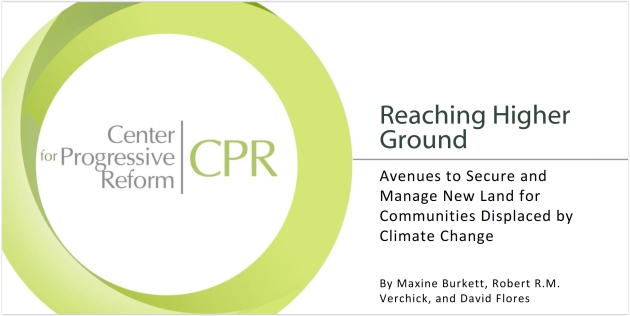
U.S. Native Coastal Communities Moving Due to Climate Change. Colorlines has an explainer: "Climate
change is impacting the world and its inhabitants in various ways. But
that impact is more visceral for some—particularly Native American
communities that are on the coast. An analysis
the Center for Progressive Reform released May 3 shows that 17 U.S.
communities have to relocate due to climate change, and most of them are
Native American. Five are in the Lower 48, with the rest in Alaska.
Coastal communities are experiencing flooding, extreme weather, and
coastal erosion at quicker rates than other parts of the country. In
some places, like Alaskan Native villages or Louisiana’s islands, these
impacts have rendered the areas uninhabitable..."
Medical Scientists Report on the Impact Climate Change is Having on Health. University of St. Thomas climate scientist John Abraham reports for
The Guardian: "...
Lower
air quality obviously affects people with breathing problems (such as
asthma and allergies). It can prolong the pollen seasons and worsen
allergy symptoms. Less obvious effects like increased humidity and more
heavy rainfalls can exacerbate air-quality problems indoors through mold
growth for instance. One issue I was not aware of was the threat of
climate change to nutrition. Increases in carbon dioxide actually result
in a lowered nutritional value of grown food such as wheat, rice,
barley, and potatoes. This occurs because plants produce less protein
and more sugars/starches in a carbon rich atmosphere. Plants also are
less effective at taking in essential soil minerals. This is all in
addition to the threats to our food system by droughts and extreme
weather. We’ve certainly seen very severe droughts in the USA (2011 in
Oklahoma and Texas, 2012 in Midwest USA, and 2012–2016 in California) that have caused severe problems in the agricultural industries..."
These Christians Are On a Climate Mission, And Winning Converts. NRDC takes a look at a faith-based approach to framing the climate change threat/opportunity: "..
.In truth, support for climate action among evangelical faith leaders isn’t a new thing. The Evangelical Climate Initiative,
which currently represents more than 300 of these leaders, has been
sounding the trumpet on climate change for more than a decade. But the
message hasn’t always caught on among parishioners, many of whom may
feel uncomfortable endorsing a position they perceive as “liberal” or
“progressive.” What feels different about this moment in time is that
groups like the Micah Challenge, aided by expert climate communicators
like the scientist Katharine Hayhoe, finally seem to have broken through to the next generation.
This generation has grown up not just reading and studying about the
effects of climate change but actually living through them. Millennials
don’t pay too much attention to the ravings of misguided senators or to
dubious reports put out by pro-pollution think tanks. But they do listen
to the words of their favorite bloggers, authors, and singer/songwriters..."

Rep. Foster, Tom Skilling: Denying Climate Change Like Denying Smoking Dangers. Daily Herald has the story; here's a clip that got my attention: "...
Skilling
said the most recent example of climate change is the rampant flooding
throughout the Midwest. Increased pockets of violent storms and
tornadoes are also key indicators of warming causing increasing amounts
of trapped moisture. He also showed time-lapse videos of melting
glaciers around the world. "People say that the climate has always
changed," Skilling said. "The changes happening now are happening at a
rate 10 times faster than anything in the past." Foster built off
Skilling's cigarette analogy to explain why Congress has not fully
embraced human responsibility for climate change. "With cigarette
smoking, it took decades for our government to respond because there was
more on one side of the debate," Foster said. "That generates fake
science and money to bribe politicians into not taking action. As a
result, tens of thousands of people died needlessly..."
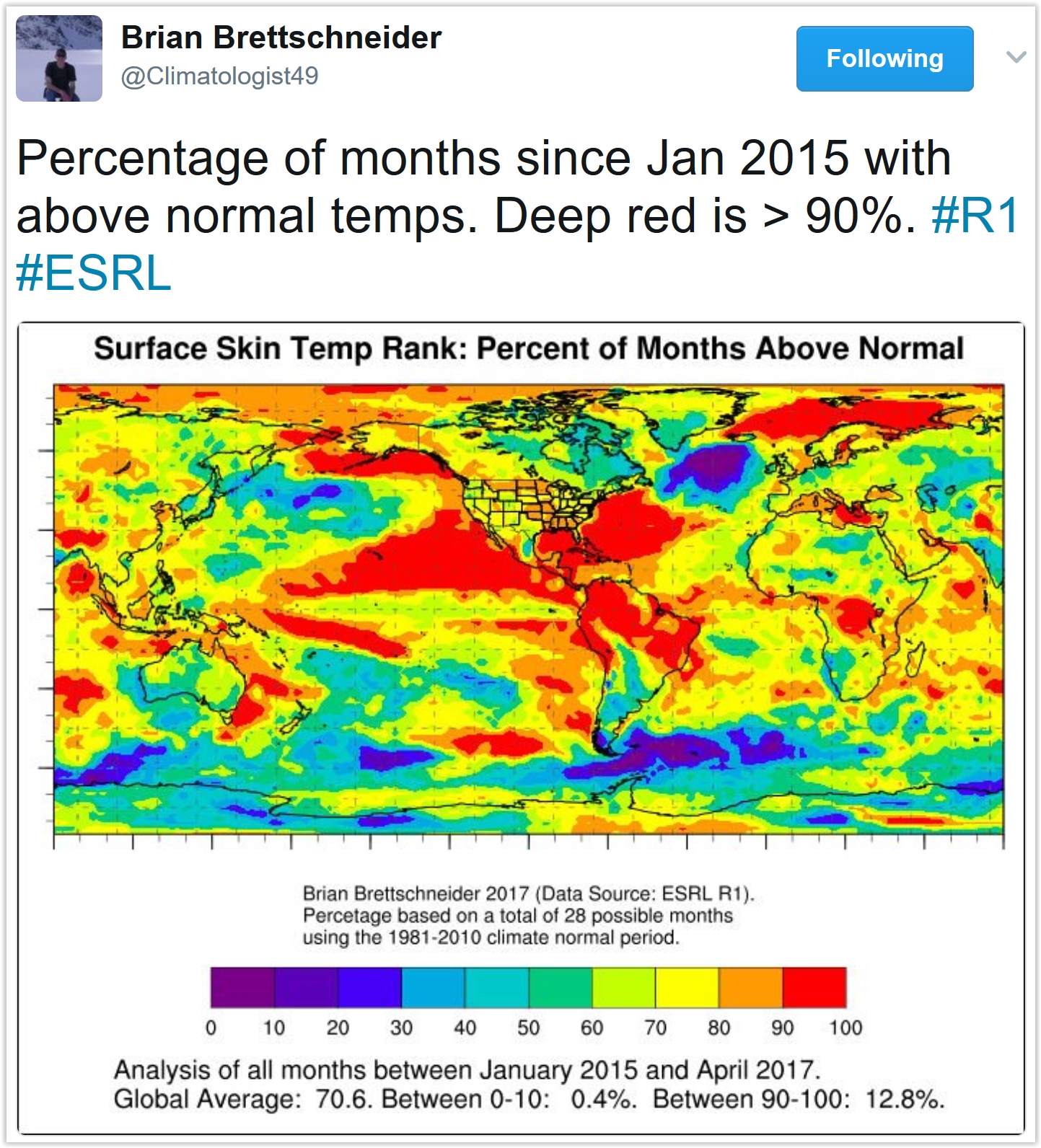
Why Canada Secretly Loves Climate Change. Not
sure "love" is the right word, but there's little doubt that our
neighbors to the north will benefit more than most countries. Here's a
clip from
Business Insider: "...
Pleasant
weather is just the retail end of Canada’s climate change perks. An
assessment from our federal government lists the many “opportunities”
climate change will present to Canadian agriculture:
“...an
expansion of the growing season to go along with milder and shorter
winters. This could increase productivity and allow the use of new and
potentially more profitable crops....These warmer temperatures would
also benefit livestock production in the form of lower feed
requirements, increased survival rates of the young and lower energy
costs. Climate change could improve soil quality.”
However,
the biggest boon to Canada as the world approaches permanent
catastrophe is our wealth in natural resources: specifically, fossil
fuels and freshwater. According to UCLA geographer Laurence C. Smith,
climate change could turn Canada into a “global superpower” by 2050..."
Al Gore Calls Media Coverage of Climate Change a "Nature Hike Through the Book of Revelation". Here's an excerpt from the
Hollywood Reporter: "
Every
night on the news is like a nature hike through the Book of
Revelation," Al Gore said Saturday night when asked his opinion of how
the news media reports on climate change. "And I'll wait for the
newscasters to connect the dots," he continued, adding that they rarely
do. Gore spoke about the state of the news media and its effect on the
conversation surrounding global climate change at a Q&A before an
advance screening of his his latest documentary, An Inconvenient Sequel:
Truth to Power, held at the Greek Theatre in Los Angeles. At the
Fandango-sponsored event, actor Joseph Gordon-Levitt moderated the
conversation with the former vice president of the United States, asking
about "fake news" and its place in the denialist narrative about
climate change..."
Image credit: Participant Media.

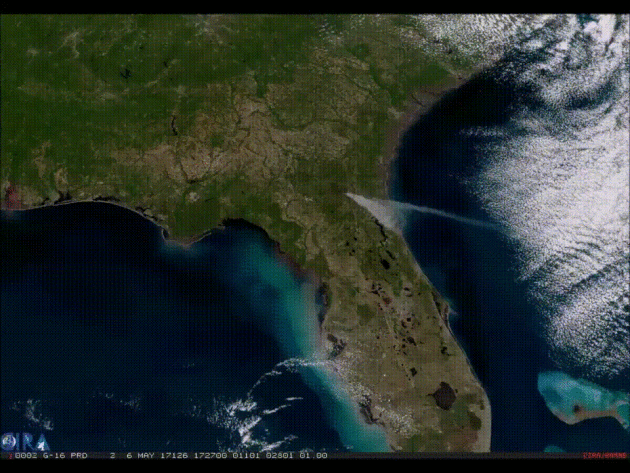
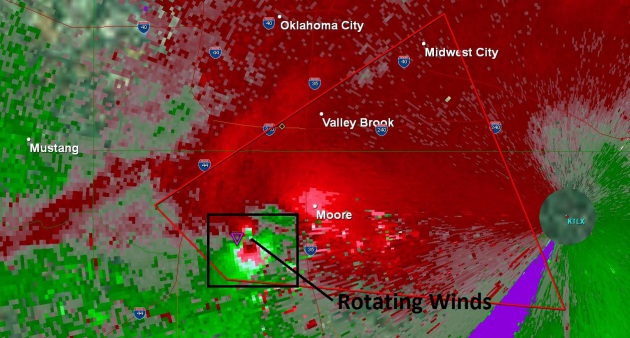


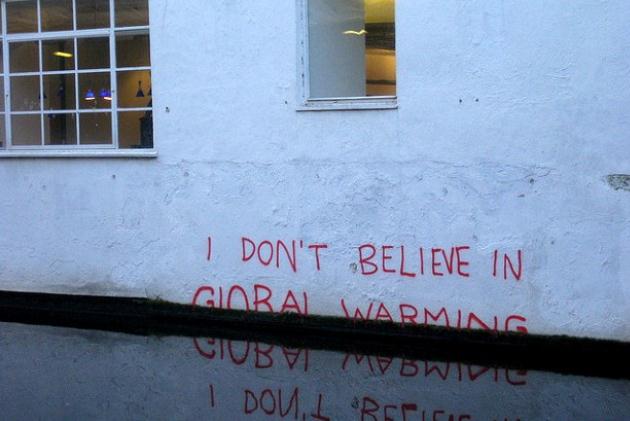

No comments:
Post a Comment